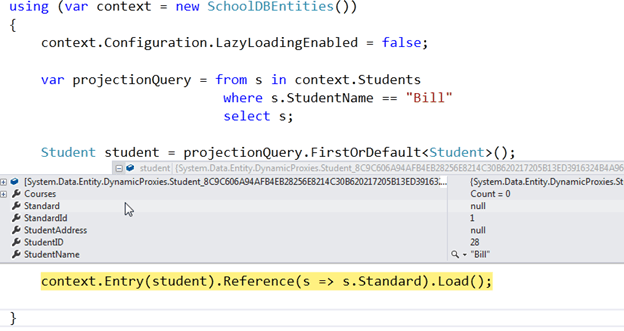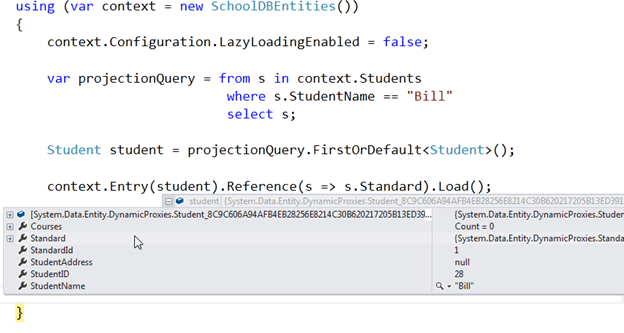Explicit Loading with DBContext
Even with lazy loading disabled, it is still possible to lazily load related entities, but it must be done with an explicit call. Use the Load method of DBEntityEntry object to accomplish this.
The following code explicitly loads Standard of particular Student using the Reference() method of DbEntityEntry:
using (var context = new SchoolDBEntities()) { //Disable Lazy loading context.Configuration.LazyLoadingEnabled = false; var student = (from s in context.Students where s.StudentName == "Bill" select s).FirstOrDefault<Student>(); context.Entry(student).Reference(s => s.Standard).Load(); }
If you run the code shown above, you can see that it first loads student but not standard, as shown below:
The load method to get the Standard entity is shown below:
The code shown above will execute two different database queries. The first query gets Student and the second query gets Standard.
Load collection:
Use the Collection() method instead of Reference() method to load collection navigation property. The following example loads the courses of student.
using (var context = new SchoolDBEntities()) { context.Configuration.LazyLoadingEnabled = false; var student = (from s in context.Students where s.StudentName == "Bill" select s).FirstOrDefault<Student>(); context.Entry(student).Collection(s => s.Courses).Load(); }
Note: The Load extension method works just like ToList, except that it avoids the creation of the list altogether.

